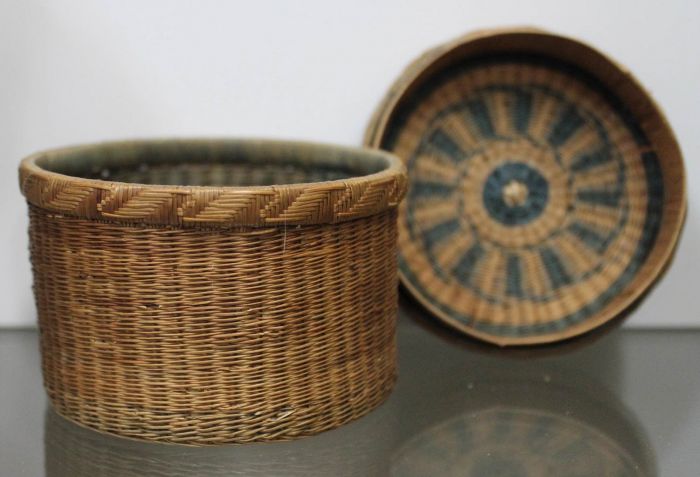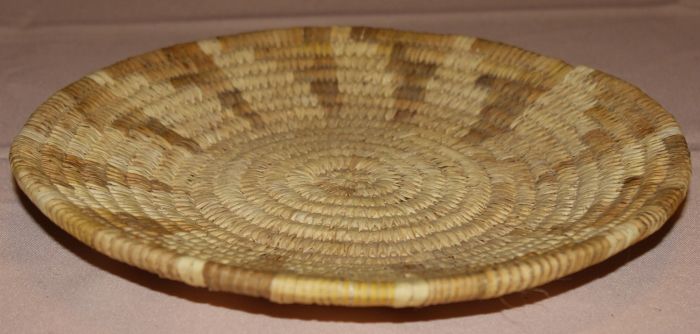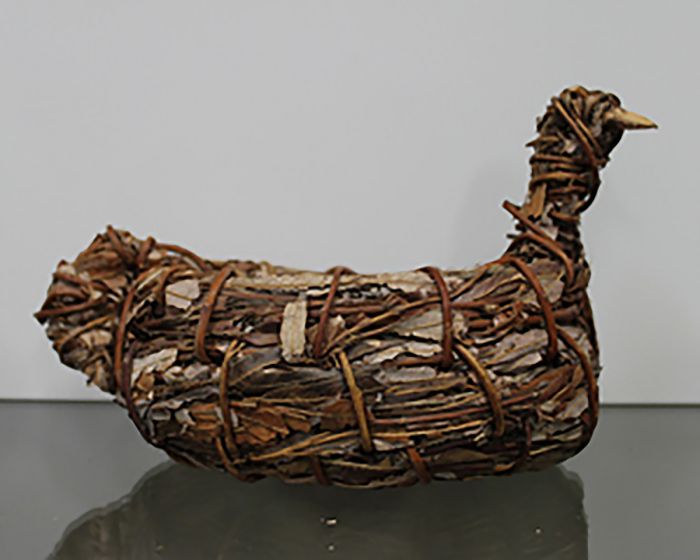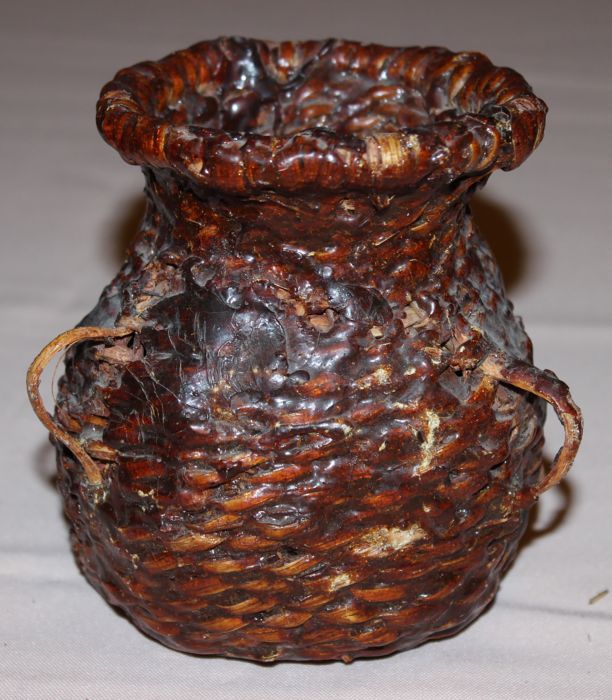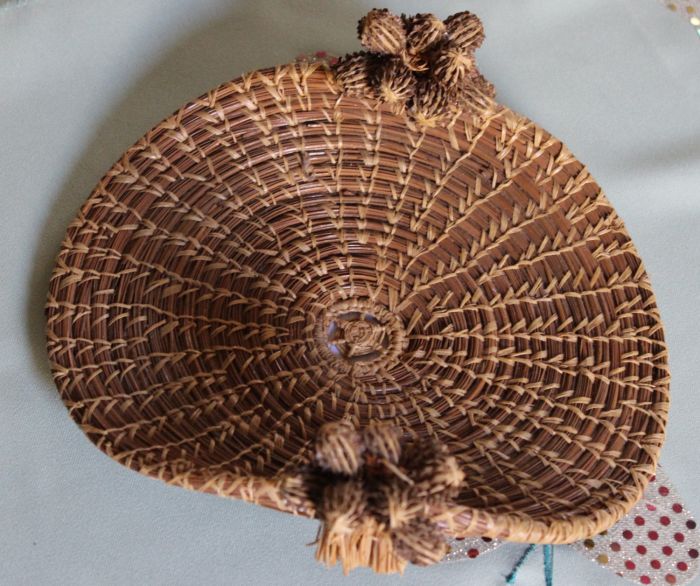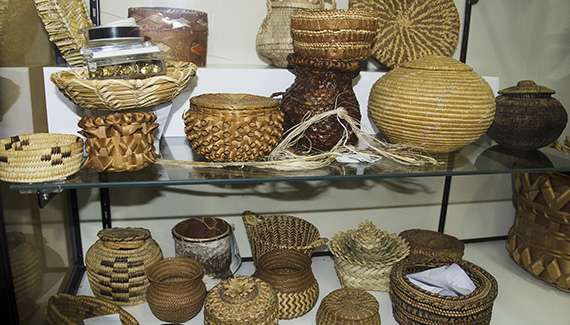
It has been a “strange and surreal” journey through Native American culture and history for Cheryl McKnight and her staff in CSU Dominguez Hills’ (CSUDH) Center for Service Learning, Internships and Civic and Community Engagement (SLICE). Since September 2016, Indian baskets from as far back as the mid-19th Century have been arriving at the center.
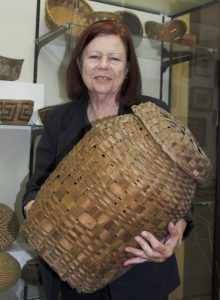
Received on “long-term loan,” nearly half of the more than 50 baskets were provided by a private donor who inherited them from his mother.
“We have an Apache basket from the 19th Century that is lined with pitch, which means it was used to carry water,” said McKnight, director of SLICE. “Some baskets were even created to hold babies’ umbilical cords. That was considered powerful medicine, and as people aged, they were carried in medicine pouches around their necks.”
Basketry is an essential part of a Native American culture and history, and is still important to many Indian nations today. Usually decorative in design, most baskets are utilitarian, while others serve in rituals. They have many uses, such as storing personal belongings, collecting and protecting food, and being used to carry heavy loads. Some cultures weave baskets to serve as baby carriers, as drums, and as water bottles by coating the basket with resin.
Two of the baskets are quite valuable, according to McKnight, and were woven by Mission Indians, a designation coined in 1928 by the Sacramento Bureau of Indian Affairs to describe all Southern California Indians–no matter the tribe–who were forced into labor at the missions.
This is a great opportunity to display these wonderful artifacts, and to teach people a better understanding and appreciation for various Native American cultures, and also the handiwork and artistry that goes into Indian basket weaving,” – McKnight.
“By studying these baskets and their origins, we also gain a better understand of how much women throughout history–through textiles and various other things they have produced–have contributed to their people’s economy, and survival.”
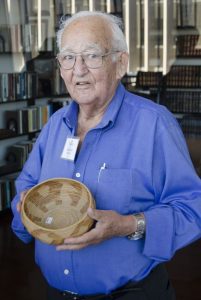
To dedicate SLICE’s basket display, Justin F. Farmer, who is of Northern Diegueño heritage and recognized as a Mission Indian, discussed the history and techniques of Indian basketry in California during a talk on Nov. 9 in CSUDH’s University Library. One of the few men to be taught the women-dominated craft of Indian basket weaving, Farmer shared some of the techniques and materials used to create the baskets, the Indian basket popularity “renaissance” in the 20th Century, as wells as the lives of “indentured” Indians, who were “owned” through auction for a certain period of time.
Most of the baskets were previously documented before they arrived at SLICE, and more are on the way, according to McKnight. As they arrive, she and her staff catalog each piece before placing them in the large, glass display cabinet.
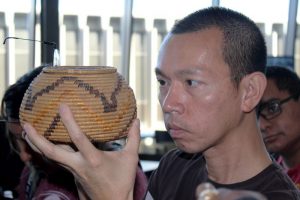
“It’s wonderful to have all this Native American history in our office, particularly baskets because they were literally woven into every aspect of their lives–from their birth, and throughout their lives–and often help them on their journeys to the other side.” said McKnight. “Some people were even buried in them.”
To view the baskets at SLICE, and check out books on Native American basketry and culture, please email Cheryl McKnight at cmcknight@csudh.edu.
